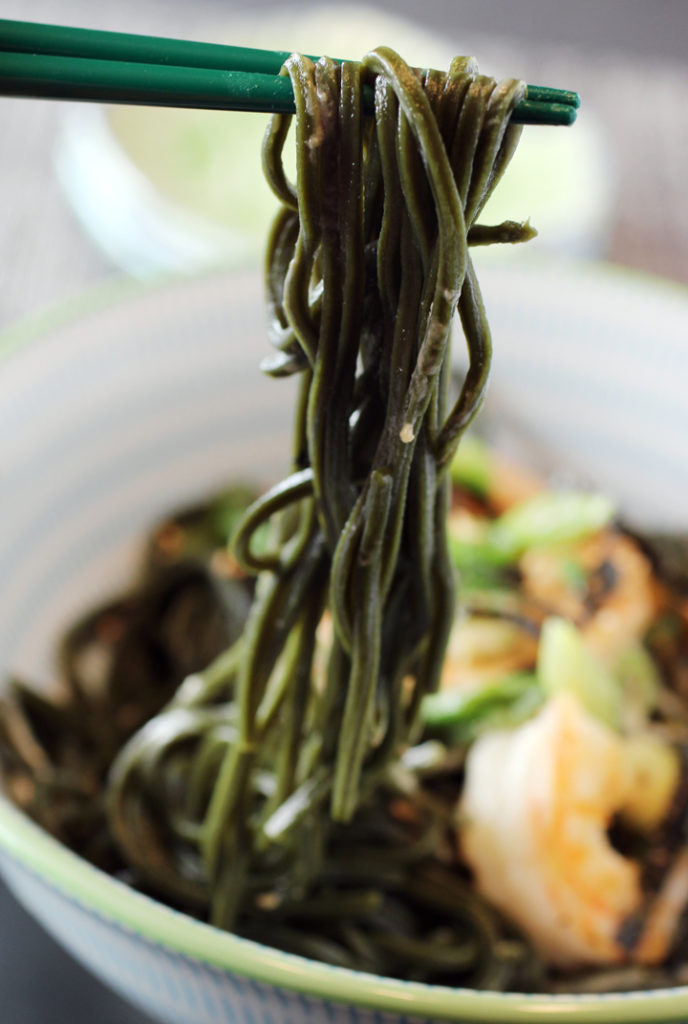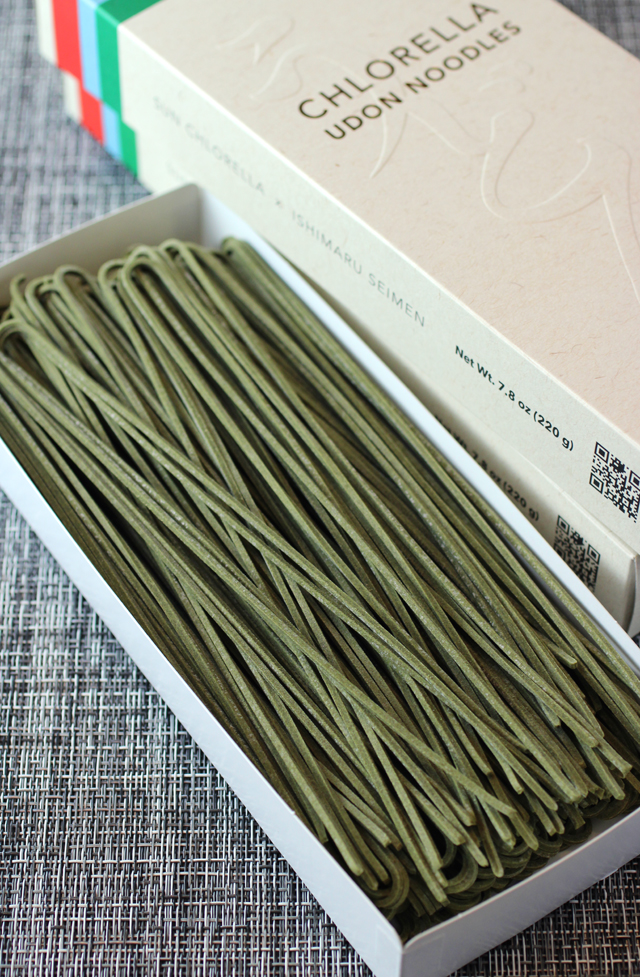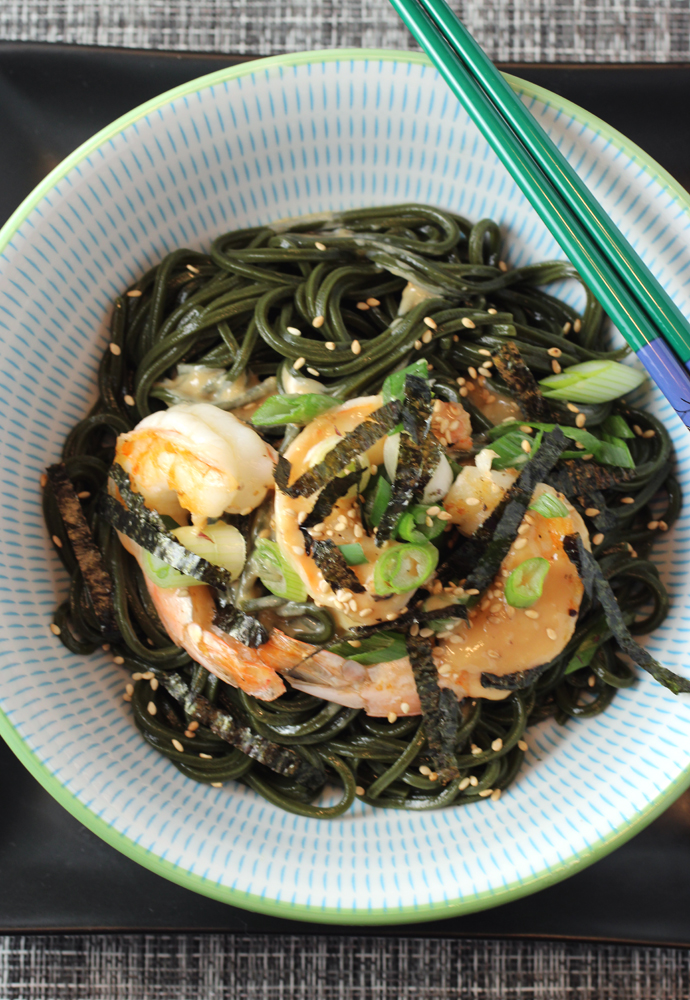Udon Noodles Go Green

These udon noodles may look much like ones tinged with matcha, but their deep moss hue actually comes from green algae.
Chlorella Udon Noodles by Sun Chlorella contain the freshwater algae known as chlorella that’s billed as one of the newest superfoods that’s rich in minerals and vitamins like D and B12.
I had a chance to try samples of the dried noodles, which cook up in all of 5 minutes. Drain, then rinse in cold water, and they’re ready to use in soups, stir-fries or salads.
I served them at room temperature, topped with grilled shrimp, green onions and slivers of nori, as well as a quick sauce of Japanese sesame paste, rice wine vinegar, soy sauce, sugar and Sriracha.

The wheat noodles get darker in color after cooking. If you’re antsy that they’ll taste like full-on algae, you needn’t worry. They are plenty chewy, with a very faint earthy-seaweed-like flavor.
While not overly salty, they do taste as if they’ve been seasoned with salt, which is one of the ingredients listed on the package. Indeed, each serving of the udon has 960mg sodium, 40g carbohydrates, 190 calories, and 150 percent of the daily recommended amount of Vitamin D.

The 7.8-ounce box says it will serve 4, but I think it’s more like 2 if you’re making the udon as the primary dish for dinner.
The udon is $7.99 per box on the Sun Chlorella site.

I personally prefer more seaweed flavor.